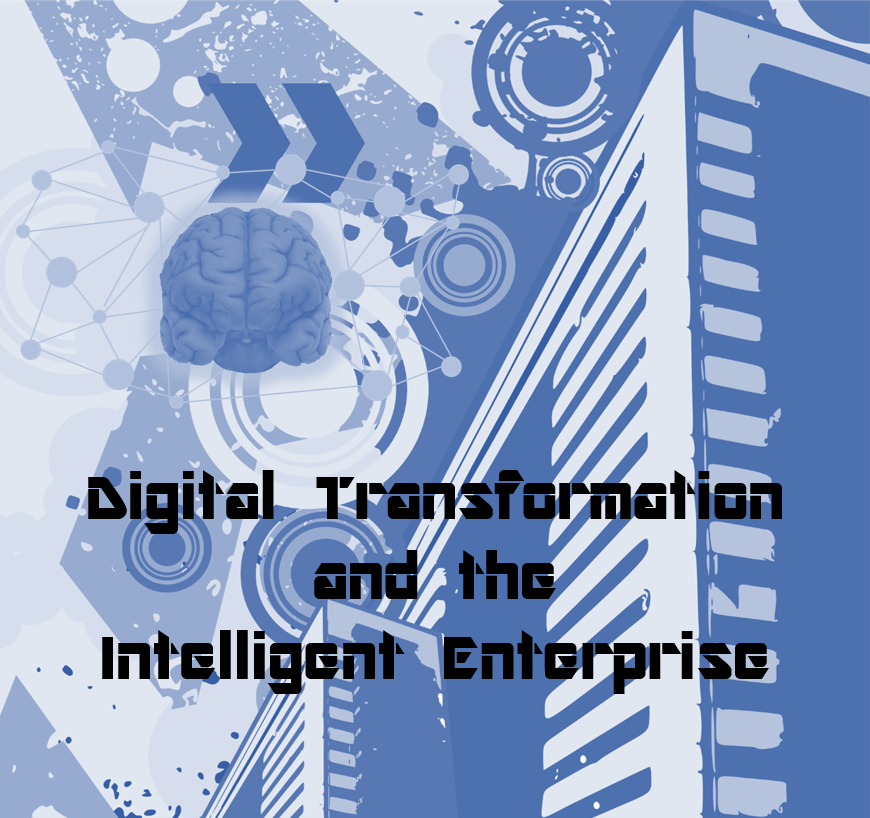There’s no denying we live in the Digital Age. There’s also no denying that digitization is changing the business landscape in dramatic ways. How businesses adapt to this changing landscape (i.e., how they transform into a digital enterprise) is the topic of much discussion. “Digital transformation,” writes, Jason Koestenblatt (@JasonKEME), “is [an] overused [term] and defined too broadly to pinpoint what exactly it means to the enterprise; and conversely, it means everything.”[1] Because digitization affects each organization differently, trying to pin down what digital transformation broadly means is a fool’s errand. Each organization must determine that for itself. McKinsey analysts, Andreas Behrendt, Shyam Karunakaran, Richard Kelly, and John Nanry, ask an important question each organization must ask itself, “Will the inundation of digital data power your business, or wash it away?”[1] Peter Weill (@peterdweill) and Stephanie L. Woerner (@SL_Woerner), research scientists at the MIT Sloan School of Management’s Center for Information Systems Research, bluntly state, “Given the amount of turmoil digital disruption is causing, it’s time for companies to evaluate the threats and opportunities — and start creating new business options for the future.”[2]
The Digital Enterprise Imperative
Even though each organization must decide for itself how digitization will affect its operations and its future, there are several common steps they can take as they develop a digital strategy. The following Boston Consulting Group (BCG) video provides an excellent overview of those steps.
McKinsey’s Behrendt, Karunakaran, Kelly, and Nanry note, “The cost of sensors, network hardware, computing power, data storage, and communication bandwidth have all fallen dramatically. The performance of data-analysis systems has increased, thanks to advances such as in-memory databases and artificial-intelligence techniques. Cloud computing systems and standard interfaces have made powerful applications cheaper and faster to implement at scale.” All of these advances are causing disruptions. Weill and Woerner assert, “The business world is rapidly digitizing, breaking down industry barriers and creating new opportunities while destroying long-successful business models. We call this process digital disruption, and although sweeping technology-enabled change often takes longer than we expect, history shows that the impact of such change can be greater than we ever imagined.” I constantly read and hear critics lament that big data projects, Internet of Things (IoT) initiatives, and other digital schemes have been slow to develop. In the fast-paced business world, patience is seldom a virtue. In the case of digitization, however, businesses are going to need a little patience. Entire industries are changing. New types of companies are being created and established companies are trying to compete by attempting a complete makeover. Digitization is slowly but surely moving the tectonic plates of business and changing the landscape. Many pundits believe the business landscape is changing so dramatically yesteryear’s business leaders will find it as alien as a distant planet. KPMG analysts put it this way: “A corporate time-traveler from the past likely wouldn’t recognize today’s tech landscape: There’s a whole new digital world of business that is vastly different from just a decade or two ago, with an accelerated pace of technology advances that are changing the rules — and risks — of every aspect of running a successful organization.”[5]
Thriving in the Digital Enterprise World
The Digital Age began with the arrival of big data. Craig Stedman (@craigstedman) observes, “Big data systems, for some companies, aren’t just platforms for new types of data processing and analytics applications — they’re the driving force behind entirely new business strategies.”[4] Despite the fact that some critics believe the pace of change is too slow, Koestenblatt reports, “The digital transformation market is set to more than double its market growth, from a $205.99 billion value to $493.39 billion value in less than five years. What does that mean? Enterprises are investing in all that technology innovations have to offer, and are moving forward at lightning speed.” I’m not sure about the “lightning speed” assertion; but, I do know companies are forging ahead with digitization strategies. Why? Koestenblatt states, “The enterprises that don’t go forward stand to lose more than the enterprises who do go forward stand to earn, and that’s why the ‘adapt or die’ slogan is more than just words.” KPMG analysts agree. “Technology, speed and expectations have disrupted the business world,” they assert, “forcing organizations to change or risk extinction.” The BCG video included above discussed five things an organization can do to adapt to the changing business landscape. They are:
• Prototype Your Strategy. “Leading digital companies test and refine, or prototype, products and strategies in close cooperation with customers and at a dizzying pace.” At Enterra Solutions® we recommend a crawl, walk, run approach to prototyping. This approach allows a solution to be tweaked before it is scaled.
• Disrupt Your Business (Before Others Do). “Executives need to create their own ‘digital attacker’ businesses. Long-dominant companies are increasingly under attack from a host of digital start-ups that are out to reinvent businesses and industries by addressing consumer needs in completely new ways. … Incumbents should be more disruptive in their approach and not leave the playing field open. Large companies hold a lot of cards — including resources, assets, relationships, and data — that smaller competitors frequently do not have enough of. But they often do not fundamentally rethink their business model. Only rarely do they launch anything that might attack the current business.”
• Digitize the Core Business. “Top management must take advantage of digital capabilities to transform the current business.” KPMG analysts suggest “there are several key digital disruptors that are headed in the same direction. These should be high-priority areas for organizations to harness and leverage in order to achieve their most important business outcomes: [1] Design innovation is about designing for people, not processes, and needs to challenge legacy business and industry models. … [2] Internet of Things offers a new ecosystem of sensor-based connected devices, technologies and objects that drive the volume, velocity and variability of data. … [3] Digital Labor represents a convergence of robotic process automation (RPA), machine learning, cognitive computing, artificial intelligence, and advanced analytics, which is automating workflows and bringing structure to vast unstructured data sets and the knowledge base of organizations. [4] Data analytics add tremendous business value by leveraging big data and identifying insights, which has become critical to the success of any organization.”
• Create Value from Data. “Agile leaders try to find ways to better use internal and external data. BCG research shows that leaders in the use of big data generate 12 percent higher revenues than companies that don’t experiment with big data. They are three times more likely than weak innovators to mine big data for new-project ideas and to actively target innovation toward digital design, mobile products and capabilities, speed of adopting new technologies, and big-data analytics.”
• Position Your Business in the Broader Ecosystem. “Companies must secure their place in the broader ecosystem — the network of companies, individual contributors, institutions, and customers that interact to create mutual value. Digital ecosystems are disrupting businesses in nearly every consumer-centric industry through close collaboration among partners, institutions, and customers. Ecosystem players join forces with external companies working toward a common goal and achieve complete alignment of the value chain.”
As noted earlier, each organization must decide for itself how it will take these steps and leverage emerging technologies to transform into a digital enterprise. There are likely to be false starts and missteps along the way; but, it’s all part of the transformation process. Organizations successfully making the transformation to a digital enterprise will reap rewards for decades to come. Weill and Woerner conclude, “As you ponder how a digital future will change your business, it’s worth remembering the words of computer visionary Alan Kay: ‘The best way to predict the future is to invent it.'”
Footnotes
[1] Jason Koestenblatt, “What’s The True Value Of Digital Transformation?” Enterprise Mobility Exchange, 27 September 2017.
[2] Andreas Behrendt, Shyam Karunakaran, Richard Kelly, and John Nanry, “We are living in a digitally disrupted world,” McKinsey & Company, August 2017.
[3] Peter Weill and Stephanie L. Woerner, “Thriving in an Increasingly Digital Ecosystem,” MIT Sloan Management Review, 16 June 2015.
[4] Craig Stedman, “Big data systems put companies on new business paths,” TechTarget, 4 October 2017.
[5] KPMG, “A Whole New World: The challenges and opportunities of digital (Part 1),” CIO, 5 October 2016.





